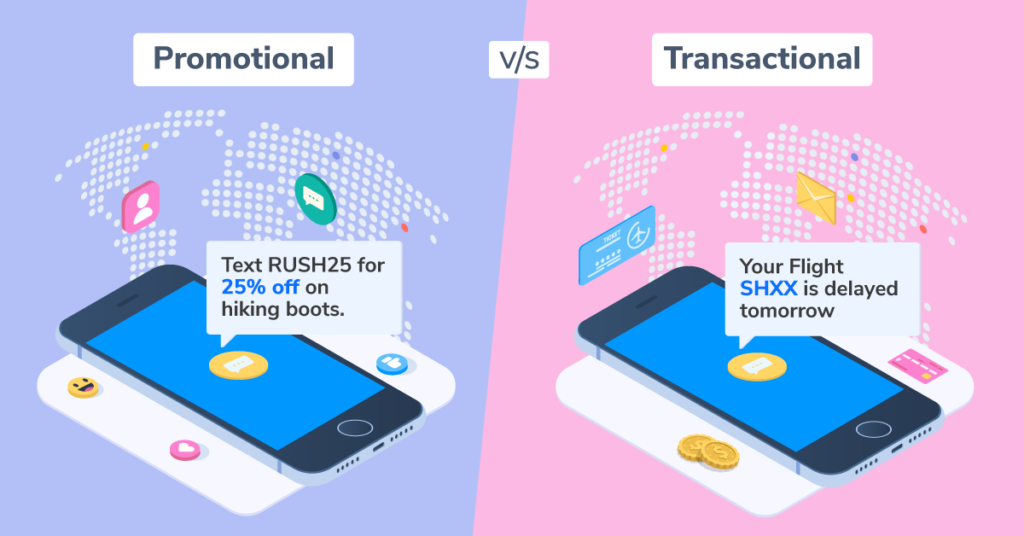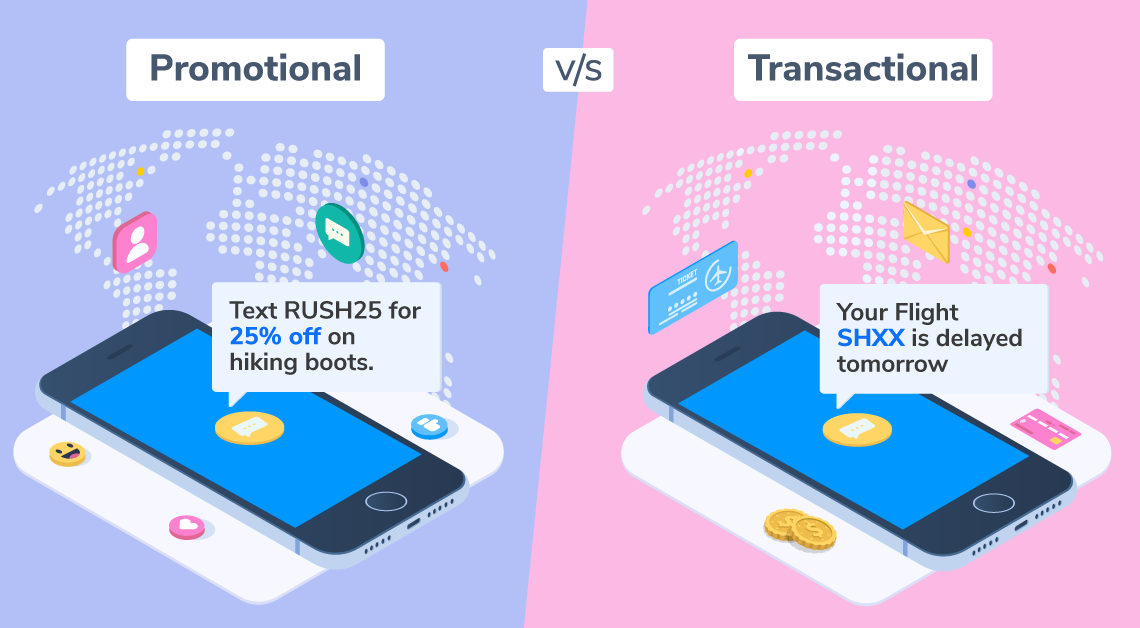
As a marketing team, it’s important to understand the distinction between promotional messages and transactional messages. Each serves a unique purpose and requires a different approach. Let’s dive into the key differences:
Promotional Messages:
Promotional messages are designed to create awareness, generate interest, and drive conversions for your products or services. Here are some characteristics of promotional messages:
- Goal:
The primary goal of promotional messages is to promote your offerings and increase sales.
– These messages aim to attract potential customers, encourage repeat purchases,and build brand loyalty. - Content:
Promotional messages typically contain persuasive content that highlights product features,benefits,& exclusive offers..
– They may include discounts,coupons,sale announcements,new product launches,& limited-time promotions.
– Use engaging visuals& compelling call-to-action (CTA)to capture attention & inspire action.
3. Target Audience :
Promotional messaging targets both existing customers as well as prospects in your target market..
Tailor these communications based on customer preferences,purchasing history,& stage in the buyer journey..
4.Opt-In Requirement :
Generally,promotional messaging requires user consent or opt-in before sending such communications..
This ensures compliance with privacy regulations & builds trust with recipients.
5.Frequency :
Frequency of promotional messaging should be carefully managed..
Sending too many can annoy recipients,resulting in unsubscribes..
Strike balance by delivering valuable content at appropriate intervals without overwhelming users.
Transactional Messages:
Transactional messages provide essential information related to a customer’s interaction or transaction with your business.Here are some key aspects:
1.Goal :
- The primary goal of transactional messages is to provide relevant information pertaining specific transactions or actions taken by users.
Examples include order confirmations,password resets,shipping notifications etc..
2.Content :
Transactional messages typically contain factual, concise information that directly relates to the user’s interaction.
– These messages should be clear,succinct,& focused on delivering important details or updates.
3.Target Audience :
Transactional messaging is directed at individual customers who have initiated a specific action requiring automated response..
This could include both existing and new customers depending on the nature of the transaction.
4.Opt-In Requirement:
Unlike promotional messages,transactional communications do not require explicit opt-in as they are considered necessary for fulfilling customer requests..
- Regulatory Compliance :
- Ensure that transactional messages comply with relevant laws and regulations such as CAN-SPAM Act or GDPR..
- Include essential elements like unsubscribe options where applicable.
6.Frequency:
While frequency may vary based on customer activity,transactional messaging should be triggered promptly in response to specific events or actions taken by users..
Avoid unnecessary duplicates while ensuring timely delivery of important information.
Understanding these differences between promotional and transactional messages allows marketing teams to tailor their communication strategies effectively. By recognizing the goals,content,target audience,opt-in requirements,and frequency associated with each type,you can deliver more targeted and engaging messaging experiences that align with your overall marketing objectives
